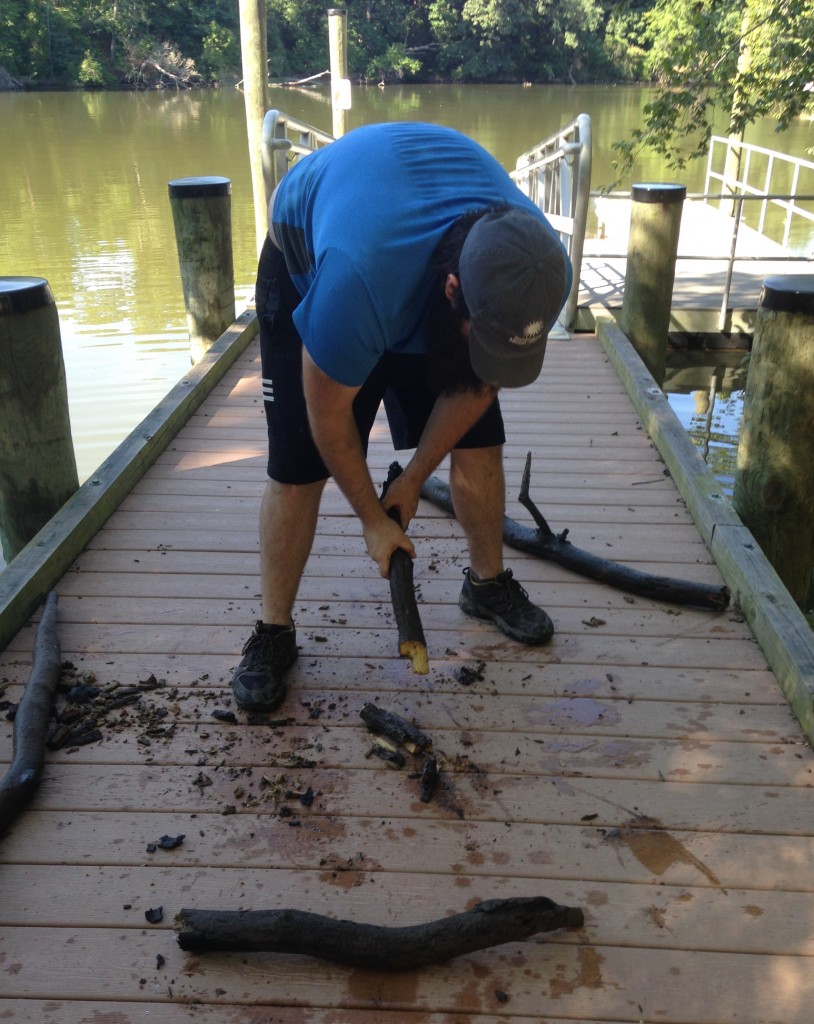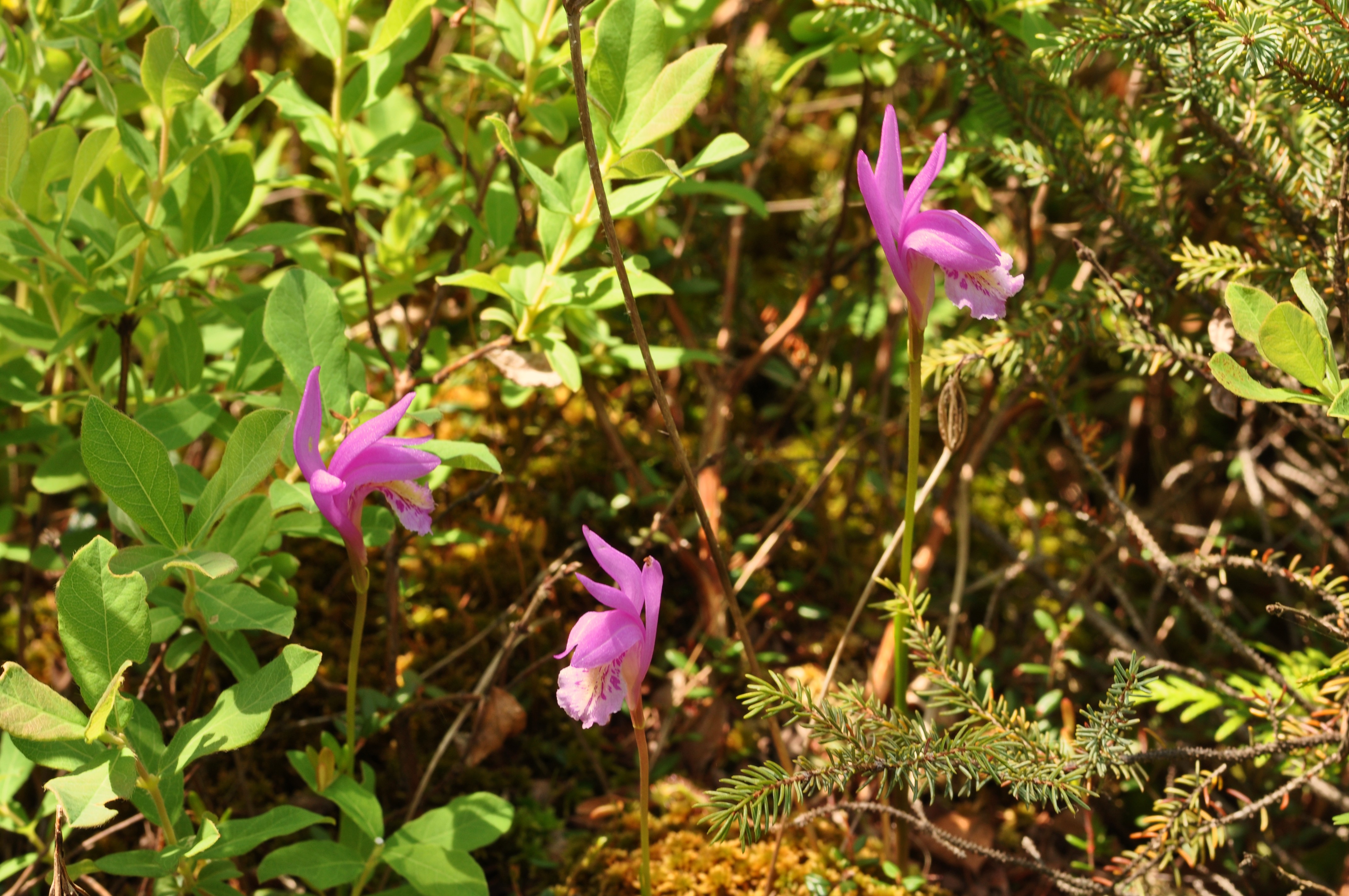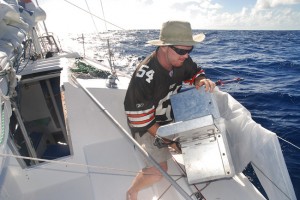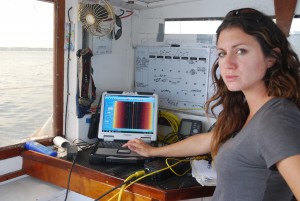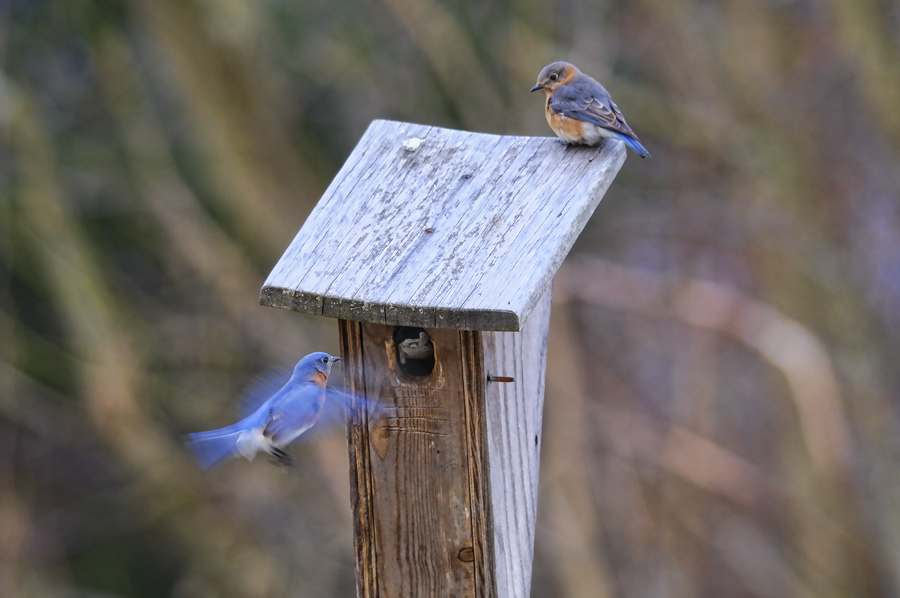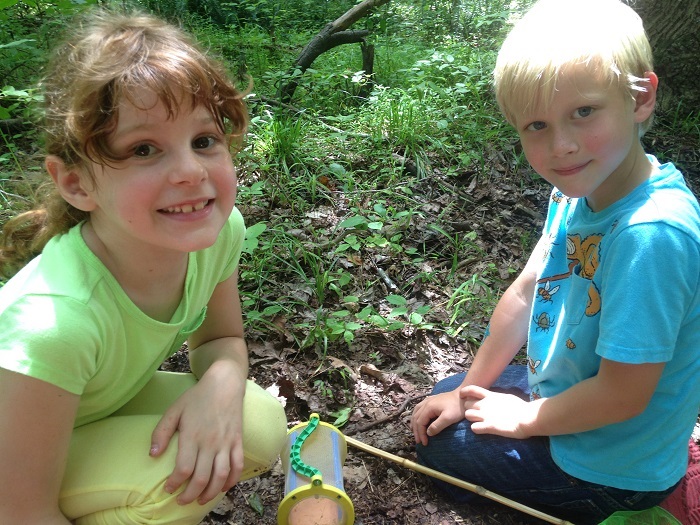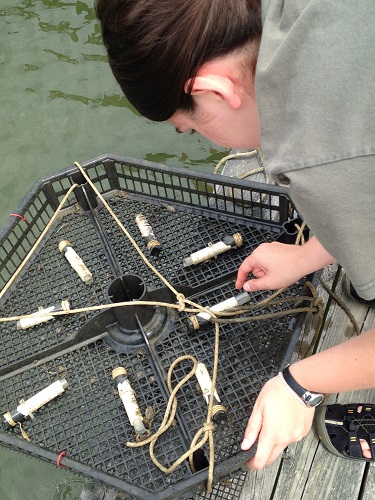Dr. Erica Staaterman listens to the ocean for a living. Often seen as a silent landscape broken only by whale or dolphin songs, Staaterman is helping uncover a wealth of noise from the ocean’s hidden creatures, first in California and now in the Chesapeake as a postdoc for the Smithsonian Environmental Research Center. Learn more in the edited Q&A below, and click the sound files to hear some of the secret sounds of the sea.
How did you get into acoustic ecology?
My first research job out of my undergrad was working for Sheila Patek at UC Berkeley….She had a bunch of recordings of these [California spiny] lobsters making sound, and nobody really understood why they make sound. So we did an experiment where we tried to understand the function of the sounds made by these lobsters. So anyway, that was sort of my first foray into acoustics, and from there I just thought it was really fascinating.
In California, you described researching a chorus of mantis shrimp. What did that sound like?
We called them rumble groups. Sometimes they would have two rumbles per group, sometimes three rumbles per group, sometimes four or five….At dawn and dusk you would hear so many different rumble groups occurring at the same time that they would all be sort of overlapping, and it seems to indicate that there are many individuals making sound at the same time, just the way birds all sing out at once in air.
Listen below: Mantis Shrimp “Rumble Groups” Click to continue »

![Erica Staaterman in the [X] with baby [X].](https://sercblog.si.edu/wp-content/uploads/2015/11/withbabyfish_brightened.jpg)



